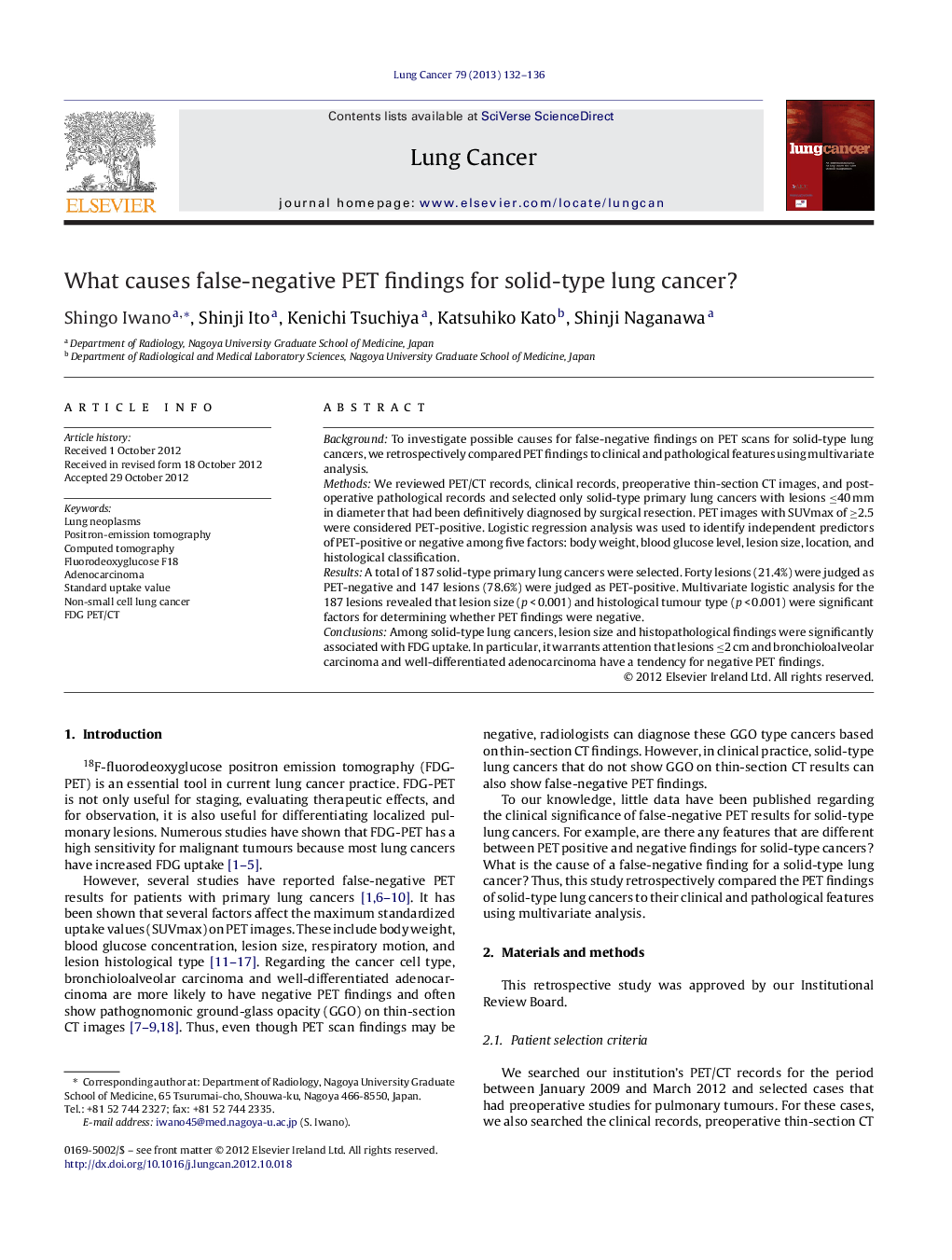| Article ID | Journal | Published Year | Pages | File Type |
|---|---|---|---|---|
| 2141334 | Lung Cancer | 2013 | 5 Pages |
BackgroundTo investigate possible causes for false-negative findings on PET scans for solid-type lung cancers, we retrospectively compared PET findings to clinical and pathological features using multivariate analysis.MethodsWe reviewed PET/CT records, clinical records, preoperative thin-section CT images, and postoperative pathological records and selected only solid-type primary lung cancers with lesions ≤40 mm in diameter that had been definitively diagnosed by surgical resection. PET images with SUVmax of ≥2.5 were considered PET-positive. Logistic regression analysis was used to identify independent predictors of PET-positive or negative among five factors: body weight, blood glucose level, lesion size, location, and histological classification.ResultsA total of 187 solid-type primary lung cancers were selected. Forty lesions (21.4%) were judged as PET-negative and 147 lesions (78.6%) were judged as PET-positive. Multivariate logistic analysis for the 187 lesions revealed that lesion size (p < 0.001) and histological tumour type (p < 0.001) were significant factors for determining whether PET findings were negative.ConclusionsAmong solid-type lung cancers, lesion size and histopathological findings were significantly associated with FDG uptake. In particular, it warrants attention that lesions ≤2 cm and bronchioloalveolar carcinoma and well-differentiated adenocarcinoma have a tendency for negative PET findings.
